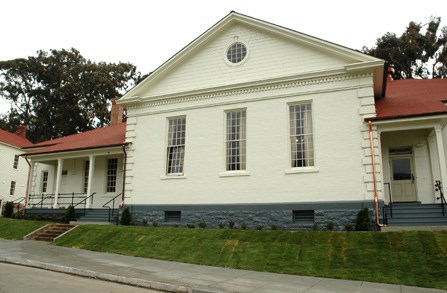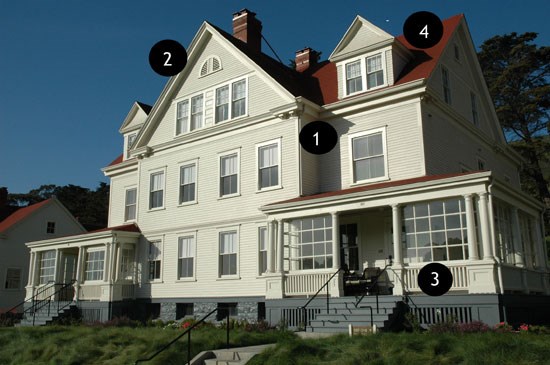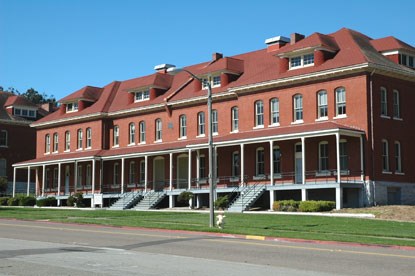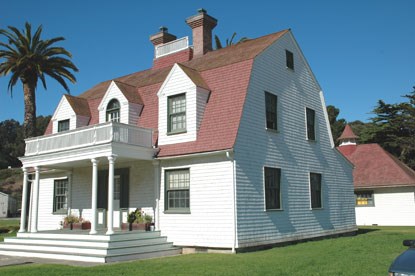Last updated: August 2, 2019
Article
Colonial Revival Style 1880s - 1940s

The Colonial Revival style, one of the most popular and enduring styles in America, was fueled by the country’s interest in its own history. The Philadelphia Centennial of 1876, held to celebrate the 100th anniversary of the signing of Declaration of Independence, sparked an interest in the history and accomplishments of the country’s forefathers. This new focus was expressed in the architecture world when the successful architectural firm of McKim, Mead and White began designing buildings inspired by the original late 18th and early 19th century Federal and Georgian buildings.
The idea behind the Colonial Revival style was to suggest the original colonial era but not to imitate it exactly. Architects began to use design elements from the American Revolution War-era, like pedimented or gabled windows, pronounced front porch and entrances, pilasters and columns, front doors with fan lights or side lights, and Palladian windows, and adapted them onto residences, banks, libraries, churches and schools. Because the late 19th century architects could take advantage of the advancements in building construction technology and better mill work (options that their forefathers did not have), Colonial Revival style buildings were larger and more robust-looking than their earlier counterparts.

1. Intersecting gable roofs with gable end returns (an element from the Greek Revival style)
2. Decorative fanlight window and symmetrical double-hung windows
3. Simple wooden columns with a base and capital
4. Pedimented (triangular) gable windows
Colonial Revival buildings at Golden Gate
Because of the calculated revival in patriotism, the Colonial Revival style was particularly appropriate to an evolving army base; the style was often used, somewhat intentionally, to imbue people with a sense of civic pride. One of the reasons that the park has so many Colonial Revival army buildings is that the style’s emergence coincided with War Department’s “Endicott Period”. During the 1890s, the War Department, headed by theSecretary of War, William C. Endicott,made sweeping recommendations to modernize and re-arm all the existing U.S. seaports and ranked San Francisco second only to New York in the importance of harbor defense. The Bay Area military posts received a flood of new Congressional funding, to help revitalized the seacoast fortifications. As a result, the army established two new forts, at Fort Baker and Fort Barry and built several new buildings at existing posts, including the Montgomery Street barracks at the Presidio.
Because the Colonial Revival style was based on simple, classical and versatile shapes, the style could be easily modified into many different types of buildings. The most consistent Colonial Revival elements found in these buildings are building symmetry; hipped roofs that often intersected one another; the use of a single, decorative fan or Palladian windows located high-up in the gabled or pedimented (triangular end) of the roof; double-hung windows with decorative features like thick concrete sills or curved, segmental arches overhead; thin columns or pilasters with simple capitals (tops); pronounced front porches.
The army’s interpretation of the Colonial Revival style produced many different looking buildings. At the Presidio, the Spanish-American War-era brick barracks (1895) were intentionally built stocky and imposing, to remind the city that the army was a formidable force and permanent neighbor. The 1905 Fort Baker Endicott-Period buildings are wood-frame and lighter in feeling but still had a solid, classical presence.


